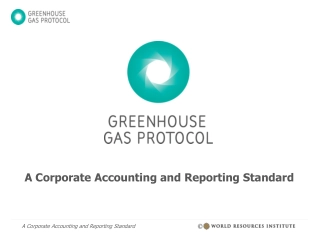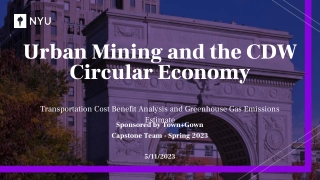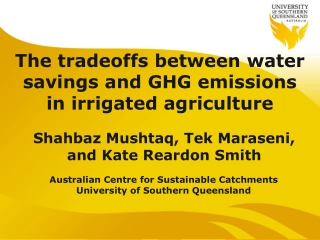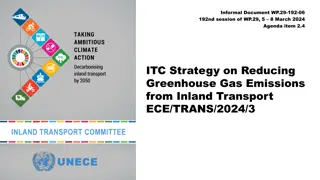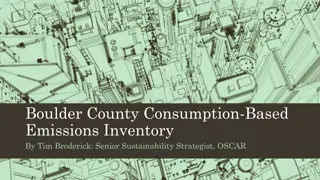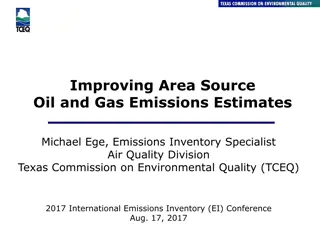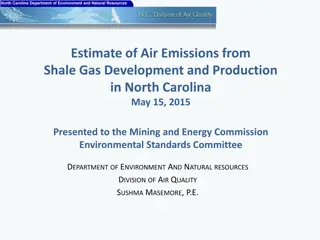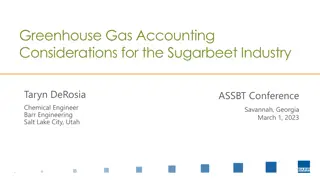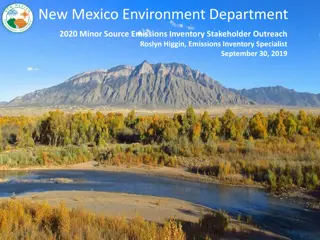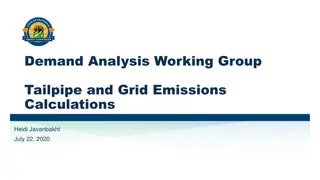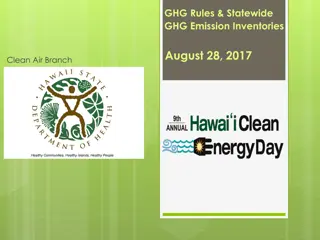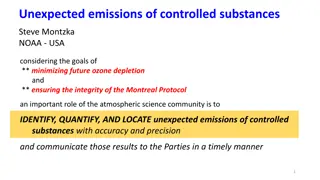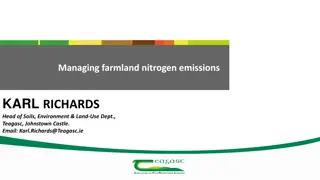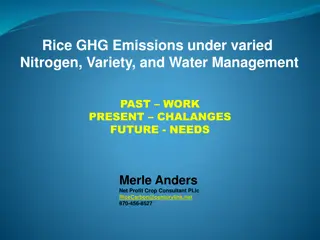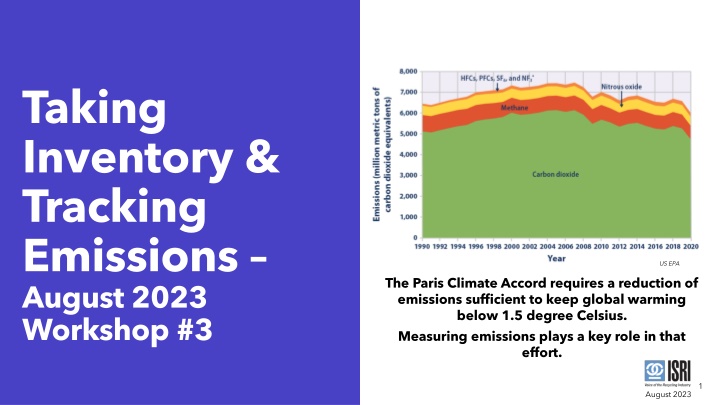
Tracking Emissions and Managing Emission Data for Sustainability Goals
Learn how to track and manage emissions effectively to achieve sustainability goals, including setting targets, establishing base years, and utilizing carbon offsets and credits. Discover best practices for data quality management and establishing an inventory quality team.
Download Presentation

Please find below an Image/Link to download the presentation.
The content on the website is provided AS IS for your information and personal use only. It may not be sold, licensed, or shared on other websites without obtaining consent from the author. If you encounter any issues during the download, it is possible that the publisher has removed the file from their server.
You are allowed to download the files provided on this website for personal or commercial use, subject to the condition that they are used lawfully. All files are the property of their respective owners.
The content on the website is provided AS IS for your information and personal use only. It may not be sold, licensed, or shared on other websites without obtaining consent from the author.
E N D
Presentation Transcript
Taking Inventory & Tracking Emissions August 2023 Workshop #3 US EPA The Paris Climate Accord requires a reduction of emissions sufficient to keep global warming below 1.5 degree Celsius. Measuring emissions plays a key role in that effort. 1 August 2023
The GHG Inventory Development Process Set a Target: Track and Report Progress Develop a Plan: Develop an ESG Inventory Management Plan - Develop data collection procedures and tools. - Document process/ guidance - Formalize procedures Collect Data: Collect & Quantify Emissions - Identify data requirements - Compile and review facility data (e.g., electricity, natural gas) - Estimate missing data to fill gaps - Calculate emissions Getting Started: Scope & Plan Inventory - Review GHG accounting standards and methods for organizational reporting - Determine organizational and operational boundaries - Choose a Base Year - Consider 3rd party verification - Finalize data - Complete 3rd party verification - Report data - Prepare to set a publicly reported GHG target and track progress August 2023 2
Data Quality Management INVENTORY QUALITY MANAGEMENT SYSTEMS 1. Establish an Inventory Quality Team 7. Report, Document, Archive 2. Develop a Quality Management Plan DATA METHODS 6. Institutionalize Formal Feedback Loops 3. Perform Generic Quality Checks SYSTEMS DOCUMENTATION 4. Perform Source- Specific Quality Checks 5. Review Final Inventory Estimates & Reports FEEDBACK June 2023 3 August 2023
Setting a Target & Establishing a Base Year A Conversation with our Stakeholders Forward thinking organizations have recognized the benefits of setting public GHG reduction targets. Setting aggressive GHG reduction targets can: Lead to the identification of additional reduction opportunities. Help garner senior management attention and increase funding for internal GHG reduction projects. Encourage innovation, improve employee morale, and help in the recruiting and retention of qualified employees. Best Practice Base Year: SBTi* uses the year the target is submitted to the initiate & assess forward-looking ambition. Choosing a Base Year for emission reduction efforts: Once you have established your existing GHG emissions, you can set a reduction target. The Base Year must be a year for which verifiable emissions data are available The Base Year should be chosen such that the target has sufficient forward-looking ambition * The Science Based Targets initiative (SBTi) is a collaboration between the CDP (was Carbon Disclosure Project), the United Nations Global Compact, World Resources Institute (WRI) and the World Wide Fund for Nature (WWF). Since 2015 more than 1,000 companies have joined the initiative to set a science-based climate target. August 2023
Emissions/Carbon Offsets & Carbon Credits How are Carbon Offsets and Credits alike: Both are accounting mechanisms representing compensation for the reduction or removal of GHG emitted somewhere else. Both represent the reduction or removal of one ton of carbon dioxide or its equivalent in other greenhouse gas. How are Carbon Offsets and Carbon Credits different: A carbon offset is the removal of GHG from the atmosphere (carbon sequestration). Often considered voluntary. Carbon credit is a reduction in GHG released into the atmosphere. Often required by government policy (e.g. Cap-and- Trade programs). Use of Carbon Offsets A GHG target can theoretically be met entirely from internal reductions at sources included in the target boundary, or it can be met through additionally using offsets that are generated from GHG reduction projects that reduce emissions at sources external to the target boundary. Forestry projects are becoming the fastest growing category: Renewable energy is another common type,and includes wind farms, biomass energy, biogas digesters,or hydroelectric dams. Companies should work to reduce their emissions before using offsets from external sources Microsoft Corporation. Microsoft has committed to one of the country s most ambitious corporate carbon-cutting programs, aiming to reach net- zero emissions by 2030. But since curbing emissions outright will take years, Microsoft is investing in projects to pull 1.43 million tons of carbon dioxide from the sky. That included 265,000 tons of CO2 that Microsoft had paid Green Diamond to remove by increasing the growth of trees. June 2023 5
Changes to Company A Conversation with our Stakeholders Base Year Recalculated for an Acquisition Thresholds for recalculating base year Organic Growth no reset Small Acquisitions - <10% Large Acquisitions > 10% Divestitures Example: Base Year (A+B) is recalculated with Facility C to 65 MT CO2e, then added organic growth increase. June 2023 6 August 2023
Absolute versus Intensity Metric A Conversation with our Stakeholders Intensity Target Absolute Target Reflects GHG performance improvements independent of business growth or decline. Designed to achieve a reduction in a specified quantity of GHGs emitted. Advantages: An intensity target may increase the comparability of GHG emissions amount companies. Advantages: These are considered to be environmentally robust and more credible to stakeholders as it entails a commitment to reduce total GHGs by a specified amount. Disadvantages: They are less environmentally robust and less credible to stakeholders because absolute emissions may rise even if intensity decreases. Using a monetary metric (e.g. dollar of revenue may require recalculation due to changes in product prices and inflation. Disadvantages: They do not distinguish between declines in production/output rather than performance. Example: Reduce emissions by 10% from 2010 levels by 2015. Example: Reduce emissions per unit of revenue by 25% from 2021 levels by 2015. June 2023 7 August 2023

